#abstract art modern ar
Explore tagged Tumblr posts
Text
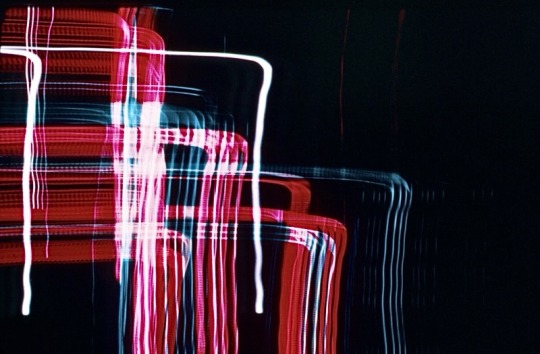
László Moholy-Nagy (Hungarian, 1895-1946)
Untitled, 1939
Fujicolor Crystal Archive print, 27.9 x 35.6cm
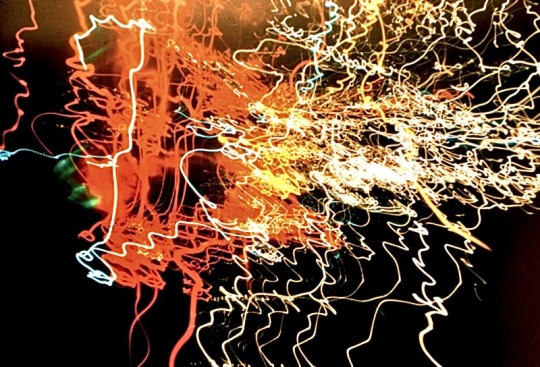
László Moholy-Nagy (Hungarian, 1895-1946)
Untitled, 1937-1946
Fujicolor Crystal Archive print, 27.9 x 35.6cm
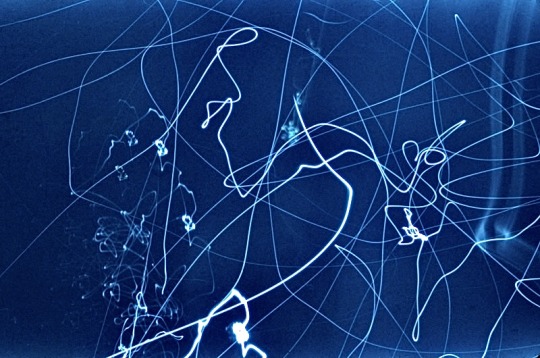
László Moholy-Nagy (Hungarian, 1895-1946)
Untitled, 1936-46
Fujicolor Crystal Archive print, 27.9 x 35.6 cm
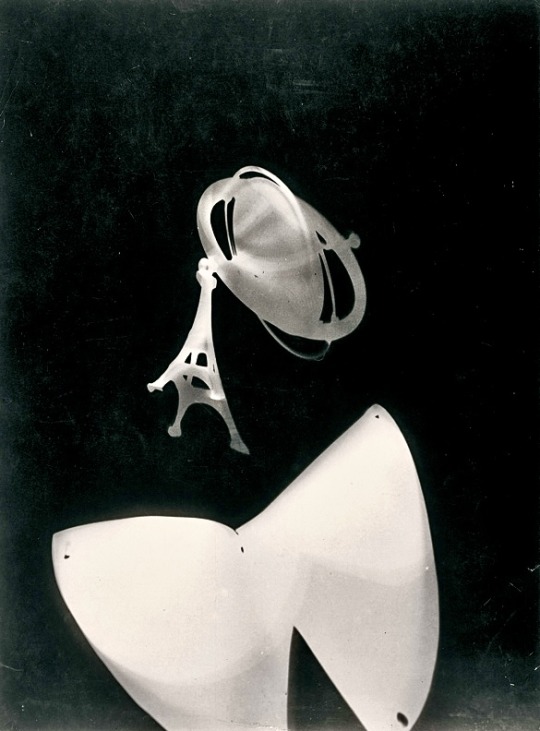
László Moholy-Nagy (Hungarian, 1895-1946)
Photogram with Eiffel Tower and Peg Top, 1928
Silver gelatin photograph, 38.7 x 29.9cm
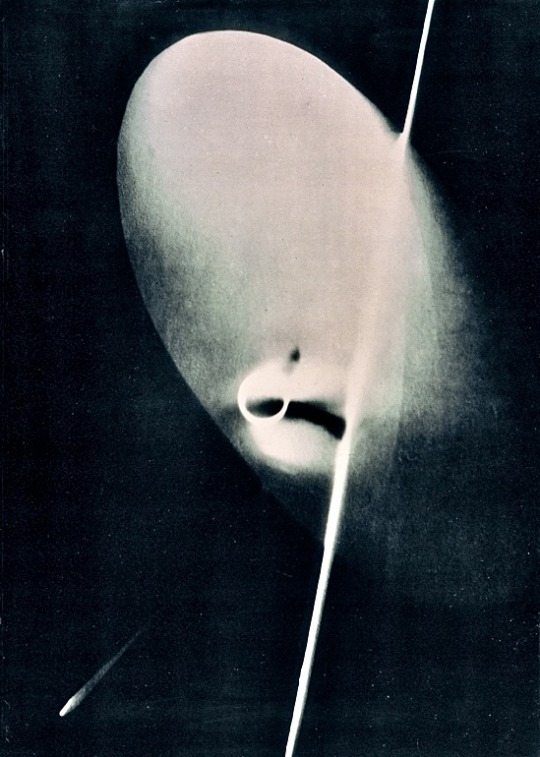
László Moholy-Nagy (Hungarian, 1895-1946)
Photogram No. II, 1929
Silver gelatin photograph, 95.5 x 68.5cm
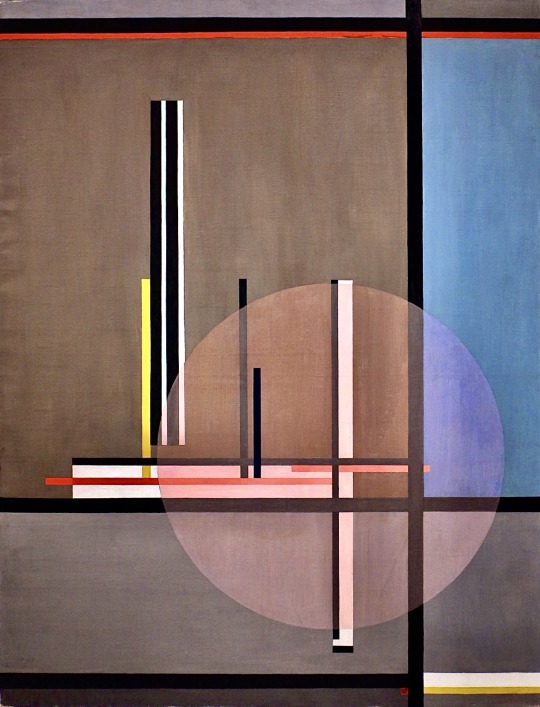
László Moholy-Nagy (Hungarian, 1895-1946)
LIS, 1922
Oil on canvas, 131 x 100cm
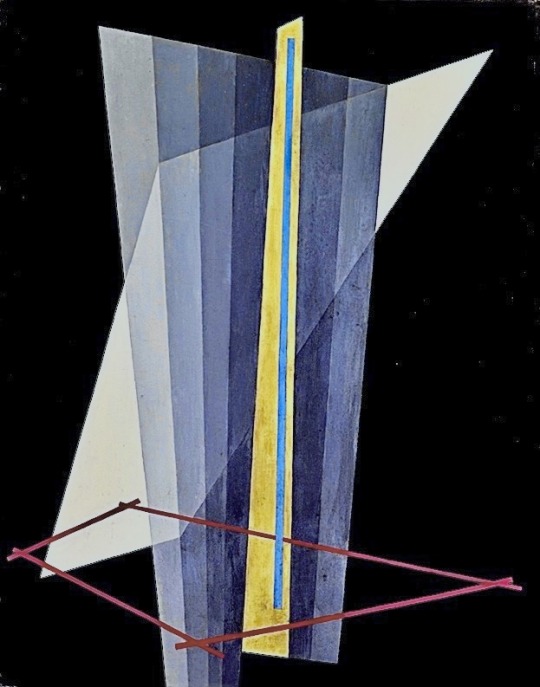
László Moholy-Nagy (Hungarian, 1895-1946)
K XVII, 1923
Oil on canvas, 95 x 75cm
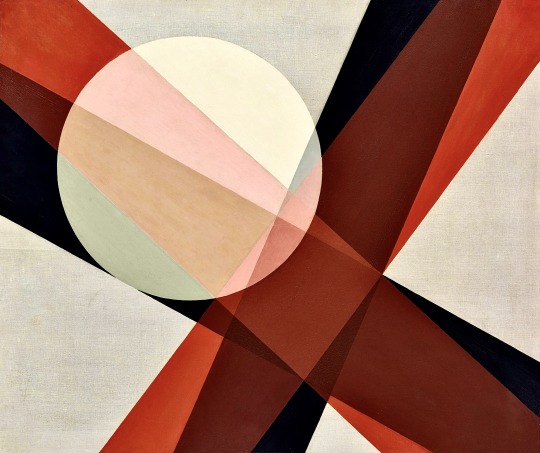
László Moholy-Nagy (Hungarian, 1895-1946)
A 19, 1927
Oil on canvas, 80 x 96cm
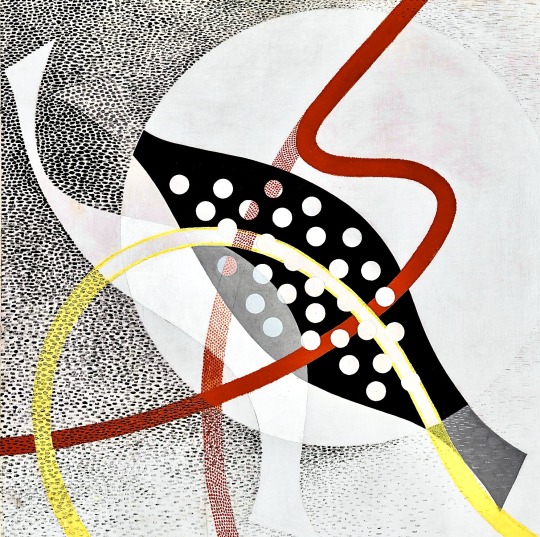
László Moholy-Nagy (Hungarian, 1895-1946)
CH BEATA I, 1939
Oil on canvas, 119 x 120cm
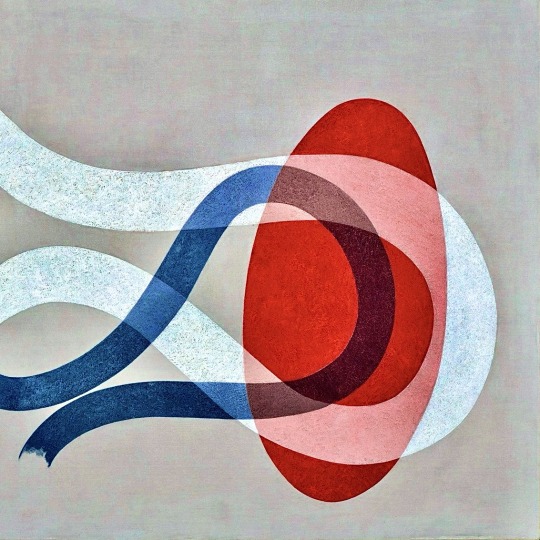
László Moholy-Nagy (Hungarian, 1895-1946)
CH SPACE 6, 1941
Oil on canvas, 119 x 119cm
László Moholy-Nagy Retrospective exhibition at Schirn Kunsthalle, Frankfurt
8th October 2009 - 7th February 2010
Artworks © Hattula Moholy-Nagy for the Estate of László Moholy-Nagy © VG Bild-Kunst, Bonn 2009 / Artists Rights Society (ARS), New York
ART BLART_ ART AND CULTURAL MEMORY ARCHIVE
Curated blog and article by Dr. Marcus Bunyan:
•
•
▪️YouTube silent video >> László Moholy-Nagy Ein Lichtspiel Schwarz Weiss Grau (Light Play: Black, White, Grey) [1930 / 6mins.+34secs.]:
youtube
Ein Lichtspiel Schwarz Weiss Grau (Light Play Black White Grey) is perhaps Lázló Moholy-Nagy's best-known film work. It features his Light-Space Modulator, also known as a lighting fixture for an electric stage.
Light-Space Modulator is a key work in the history of kinetic art and even new media art, and therefore one of the most important works of art of its time.
Initially conceived by Moholy-Nagy in the early 1920s and built between 1928 and 1930, its completion required the involvement of a number of collaborators.
It was intended to be the centrepiece of the Contemporary Room at the Provinzialmuseum in Hanover, planned (but never realised) by Moholy-Nagy and Alexander Corner, the museum's director.
Light-Space Modulator was exhibited in 1930 at an exhibition in Paris on the work of the German Werkbund. From the point of view of the object, it forms a complex and beautiful set of metal, plastic and glass elements, many of them movable by the action of an electric motor, surrounded by a series of coloured lights.
Moholy-Nagy used it to produce light shows that he then photographed or filmed, as in the case of the film shown here. Although in black and white, the film manages to capture the kinetic glow of the sculpture.
•
•
▪️YouTube video >> László Moholy-Nagy: Proto-Conceptual Artist [2019 / 5mins.+36secs.]:
youtube
Coinciding with the Bauhaus centenary, Hattula Moholy-Nagy and Daniel Hug, the daughter and grandson of László Moholy-Nagy, consider the lasting impact of the artist’s work today. Hauser & Wirth’s exhibition in London dedicated to Moholy-Nagy examines his influence as a proto-conceptualist, whose work interrogated the role of the art object and the artist in society, anticipating questions posed by subsequent generations of artists.
László Moholy-Nagy is on view at Hauser & Wirth London from 22 May – 7 September 2019.
•
•
▪️ YouTube video >> Moholy-Nagy: Future Present exhibition overview at the Guggenheim [2016 / 3mins+14secs.]:
youtube
Curator Karol P. B. Vail provides a brief introduction to Moholy-Nagy: Future Present, a comprehensive retrospective of the work of László Moholy-Nagy (1895–1946), on view at the Solomon R. Guggenheim Museum, New York, May 27–September 7, 2016. To learn more visit https://www.guggenheim.org/moholy.
•
#Art & artists#Artworks by Lázló Moholy-Nagy#Paintings#Drawings#Photography#Photograms#Sculpture#Light sculptures#Cinema#Films#Stage set design#Typographical projects#Kinetic art#Experimental art#New media art#Modernism#Abstraction#Conceptual art#Bauhaus - Germany#New Bauhaus - Chicago#Schirn Kunsthalle - Frankfurt#Guggenheim Museums#Hauser & Wirth - London#Hattula Moholy-Nagy#Estate of László Moholy-Nagy#VG Bild-Kunst Bonn#Artists Rights Society (ARS) New York#Dr. Marcus Bunyan#Art Blart#YouTube
19 notes
·
View notes
Photo
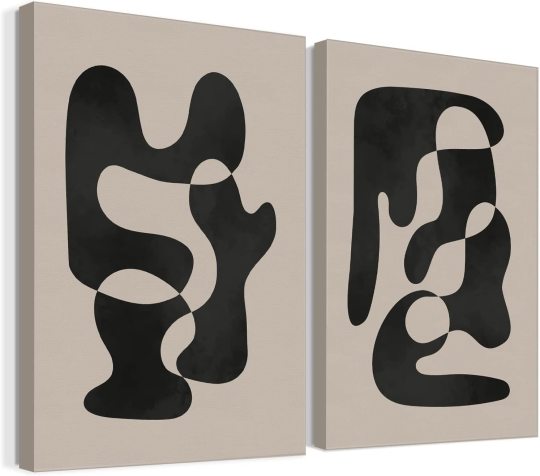
Abstract Wall Art Set of 2
Abstract art is a form of art that focuses on colors, shapes, lines, and textures, rather than representing recognizable objects or subjects. In abstract art, the artist often distorts or simplifies reality to create a unique visual language.
Abstract art can be traced back to the early 20th century, with pioneers such as Wassily Kandinsky, Kazimir Malevich, and Piet Mondrian. They sought to break away from traditional representational art and create works that were purely abstract and non-objective.
Abstract art can be divided into two main categories: geometric abstraction and gestural abstraction. Geometric abstraction emphasizes the use of simple shapes and colors arranged in a precise and balanced composition. Gestural abstraction, on the other hand, emphasizes the spontaneity and expressive brushwork of the artist.
Abstract art can be created using a variety of mediums, including painting, sculpture, photography, and mixed media. It is often used as a form of self-expression, allowing the artist to communicate emotions and ideas through a visual language that is open to interpretation by the viewer.
Abstract art can be challenging to understand and appreciate, as it often lacks a clear subject or narrative. However, it can also be a freeing and liberating form of expression, allowing the artist to create works that are entirely unique and personal
[arttothebonesinme] is a participant in the Amazon Services LLC Associates Program, an affiliate advertising program designed to provide a means for sites to earn advertising fees by advertising and linking to Amazon.com
46 notes
·
View notes
Text
Sigil Magick: Illustrating Your Intent
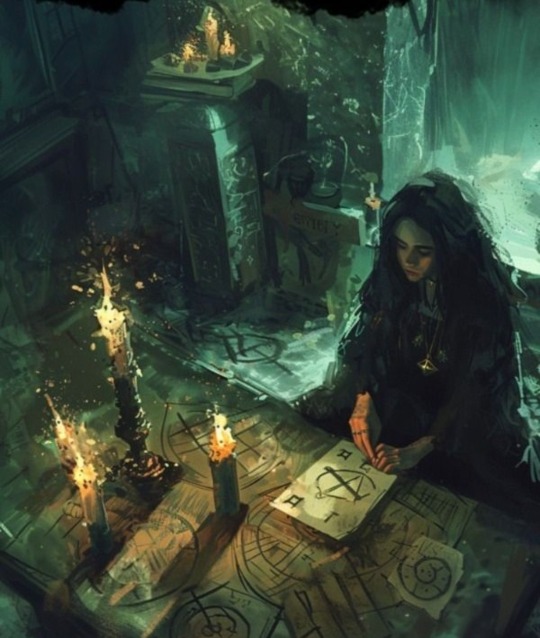
Sigils are a cornerstone of contemporary and chaos magick and function as keys to unlock the doors of reality and bend it to one’s will. These potent symbols serve as physical embodiments of one’s intentions, cast into existence through the fusion of art and willpower.
The crafting of a sigil begins with a clear and focused intention, which is then worked into a unique symbol through a creative magickal process. The magick practitioner inscribes deep personal meaning and style into their designs, making each unique to its artist. Sigils are ideal tools for manifesting your desires, imbuing objects with specific purpose and energy, protecting spaces, and communicating with the spirit world and should be used responsibly.
Origins
The practice of crafting sigils traces its roots to the ancient world but was modernized in the early 20th century by the works of Austin Osman Spare, an occultist and artist. He introduced the method of creating magical symbols by condensing letters of a desire into an abstract design. Aleister Crowley, too, influenced the practice by intertwining sigils with ceremonial magick, embedding them with a rich esoteric significance.
Some occult grimoires employ sigils as a means of contacting spirits, for example; Ars Goetia, The Book of Oberon, and Pseudomonarchia Daemonum.
Basics of Sigil Magick
Sigil magick emerges from the belief in one’s ability to manifest their focus into reality. Through a process of creation, a sigil becomes much more than mere ink on paper—it is the illustrated essence of desire. Individuals can use sigils as focal points for their will, empowering these symbols through meditation or ritual to enact change. The universe of sigils is vast and varied, types of sigils include:
• Pictorial Sigils: Intuitive symbols drawn from the subconscious
• Runic Sigils: Combinations of runic alphabets that resonate with specific energies
• Word Sigils: Derived from statements of intention, where letters are crafted into a unique symbol
Correspondences also serve a purpose in this class of magick, in order to help align one's intent to universal energies. As an artist crafts their sigil, they intertwine traditional symbols with personal significance, creating a bridge to the metaphysical world. Some relevant correspondences are:
• Numerology: Numbers carry vibrations that can enhance a sigil’s purpose.
• Zodiac Signs: Celestial influences infused to fine-tune the focus.
• Elements: The classic forces of Earth, Air, Fire, and Water lend their power to sigils, grounding them in natural harmony.
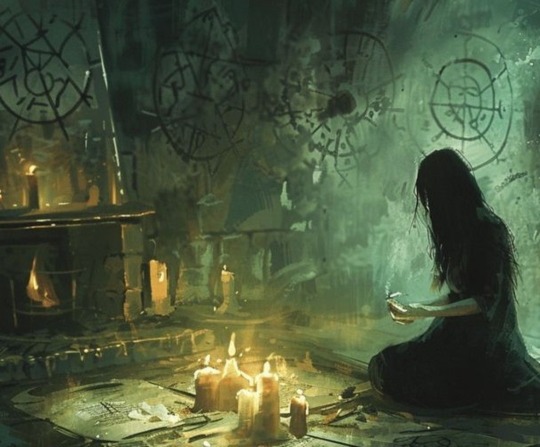
Sigil Creation
Before you take pen to paper, first envision your intent with clarity and purpose This may involve some deep introspection into the true nature of your desires. A precise intention lays the foundation for the sigil's power. Once ready, write out your intention and cross out any duplicate letters. From here a couple different methods can be utilized. Naturally you could always draw your sigils from pure instinct, creating spontaneous shapes to represent your intentions, but there are other techniques available.
The Wheel
This method employs a wheel to be used as a map for drawing your sigil. Simply start at the first letter of your intent and draw lines to each subsequent letter. Example:
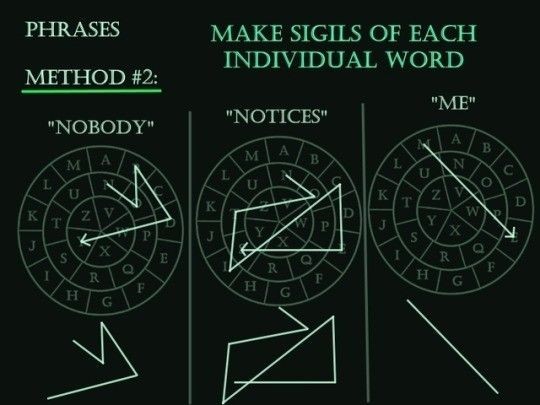
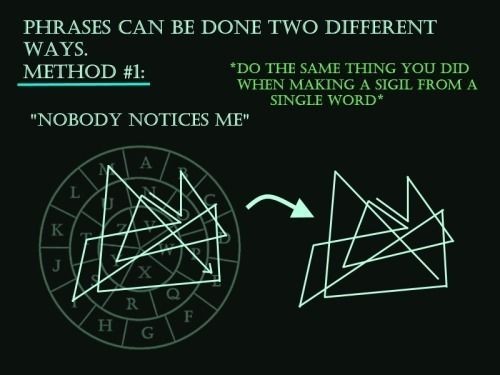
My Method
I make my sigils by breaking up the letters to create shapes. I will often decorate with extra shapes, symbols, and pictures as well. Here is a simplified example of my sigil creation process:
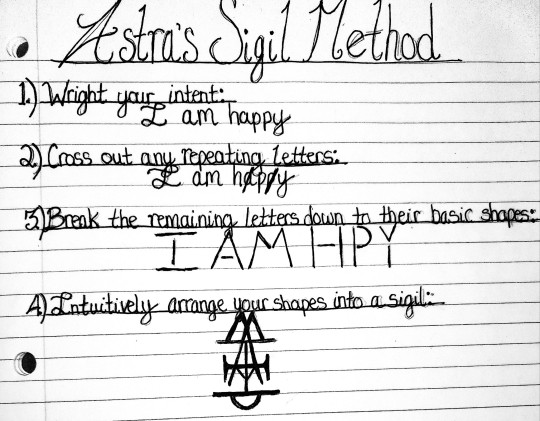
Next you must charge your sigil. Charging is the act of infusing the sigil with energy. The creator might enter a meditative state, focusing intently on the sigil while envisioning their intentions intertwining with the design. This act of focused concentration serves to embed the intention within the sigil, making it a beacon for the desired change.
Passive and Active Sigils
Intentioned sigils fall into either the passive or active sigil category based on how that sigil's energy is best utilized. Passive sigils are usually drawn on the body, item, or surface and then left alone to release their power over time. Active sigils involve some action to trigger the release of the sigil's energy, such as burning, burying, soaking with water/oil, and more. Some sigils can be used both passively and actively, but most will fall into one category.
Spirit Sigils
Many spirits and deities have sigils that represent them and these can be powerful catalysts for interacting with these beings. If the spirit you're working with doesn't have a sigil made for them (or even if they do) you can design your own symbol to connect with that spirit. Follow the same process, but instead of focusing on your intent, focus on the spirit/deity and connecting with it. You can even perform a ritual and provide an offering to invite the spirit into your space. This will allow you to draw divine inspiration straight from the source. Here are some examples of spirit/deity sigils, as well as some I created:
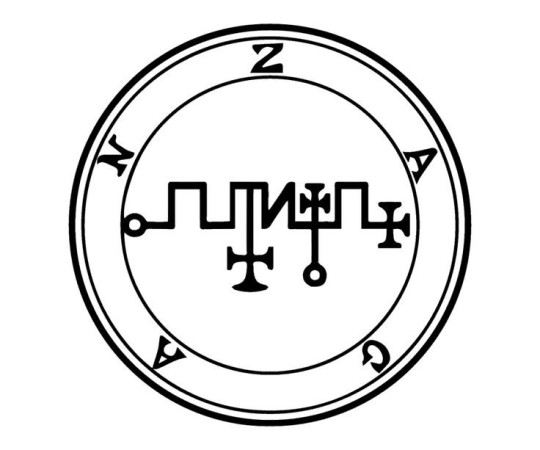
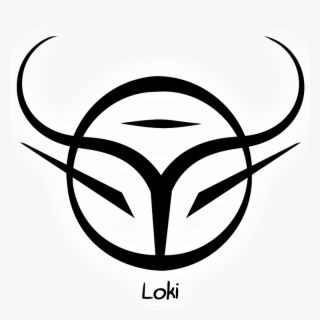

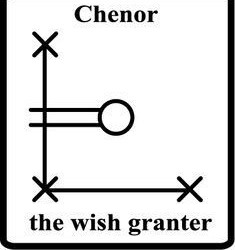
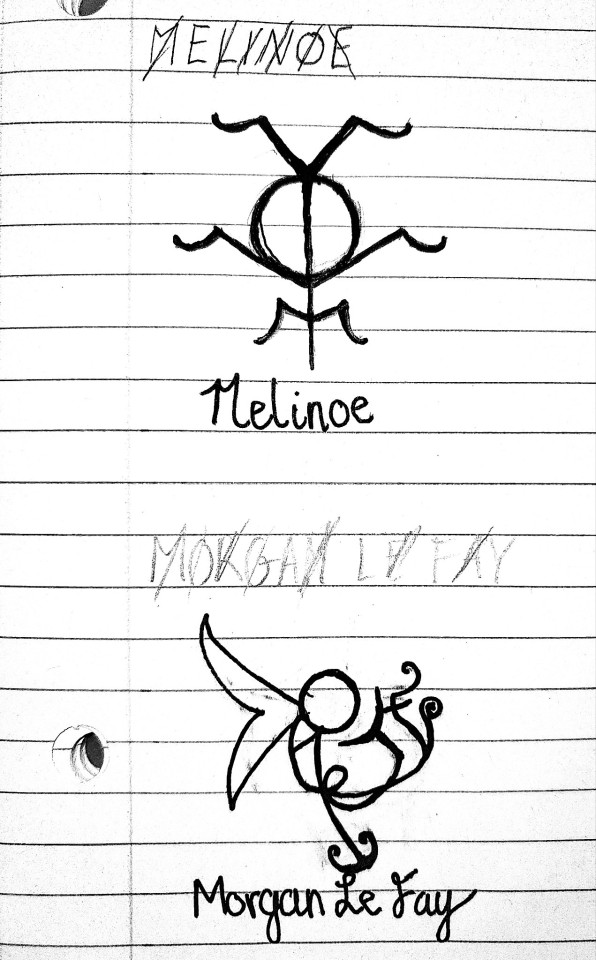
#magick#witch#witchcraft#sigil#sigils#sigil magic#sigil magick#chaos#chaos magick#chaos magic#chaos witch#satanic witch#lefthandpath#dark#satanism#demons#demonolatry#spirit work#spell work#spellwork#spell#spells#spellcasting#symbology#symbolism#symbols#eclectic#witchblr#witch community#pagan
501 notes
·
View notes
Text
Sims 3 Build - Brownstone Townhouse
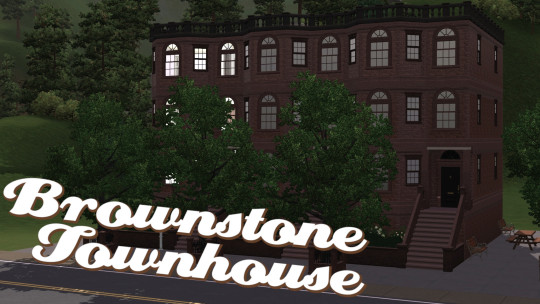
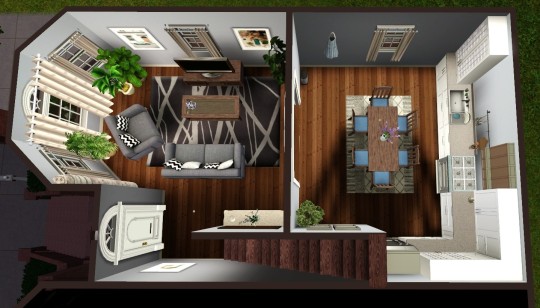
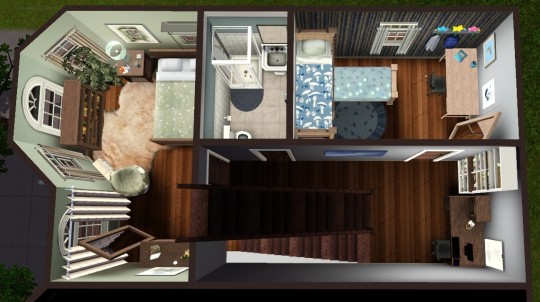
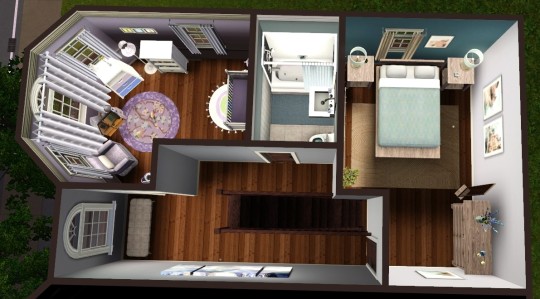
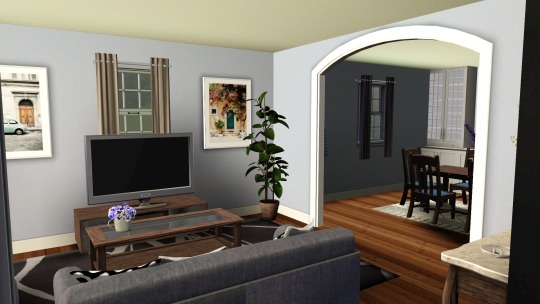
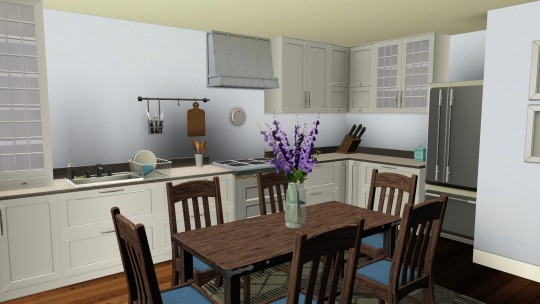
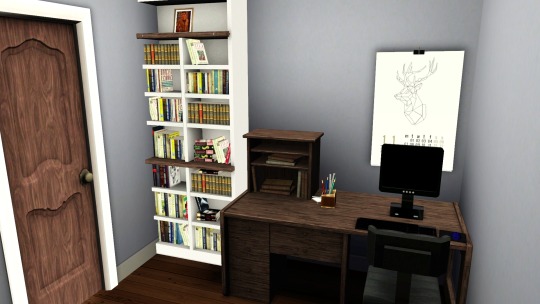
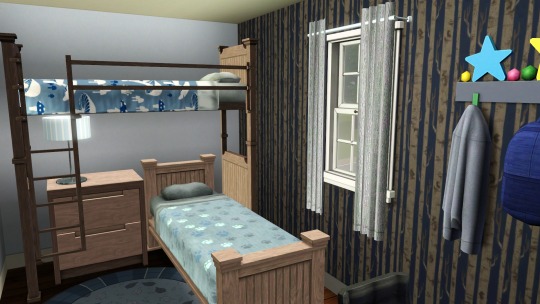
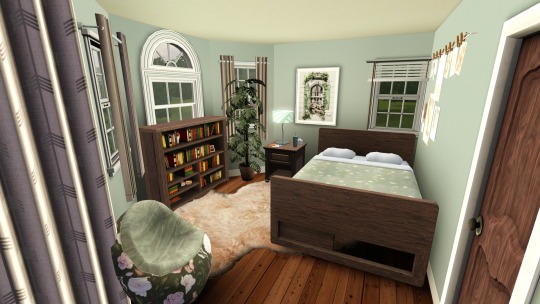
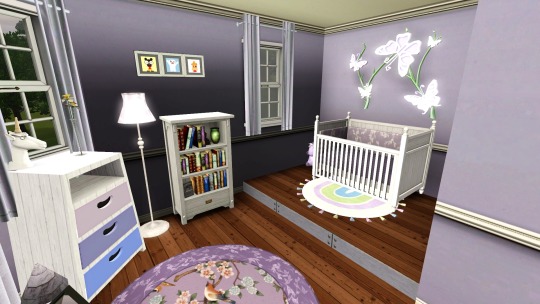
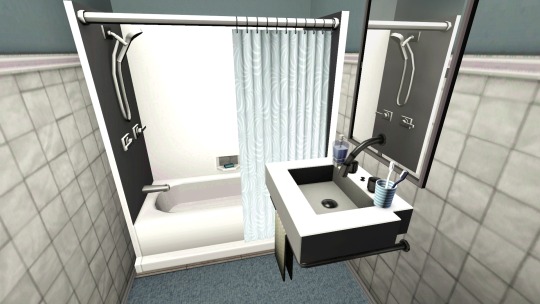
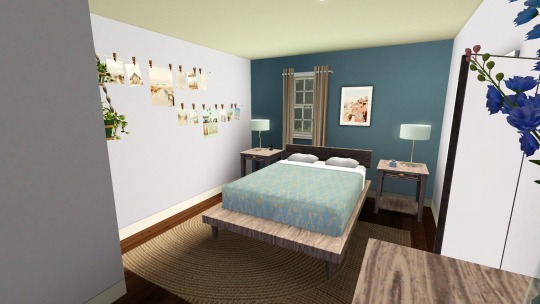
This brownstone townhouse is perfect for a large sim family - with a nursery and all. 4 bedrooms and 2 bathrooms on a 30x20 lot.
Watch the speed build: https://youtu.be/O5xdt7HCdFU
Download here:
Patreon (free): https://www.patreon.com/posts/109702177/
Exchange:
Expansion packs:
World Adventures
Ambitions
Late Night
Generations
Pets
Showtime
Supernatural
Seasons
University Life
Stuff packs:
None
Store content:
None
Custom content:
PralineSims - P-Glass Tiles III
Wandering Sims - Gentle Leaf Pattern 3
Wandering Sims - Nocturnal Watercolor Pattern 8
missyzim - Neoclassic Build Set (Window Arched Short, Arched Door)
Martassimsbook - cmdesigns Anemone Bathroom Set (Candle, Small Mirror)
Martassimsbook - Sims 4 Parenthood Xtreme Shower Tub
ATS3 - Canister
Martassimsbook - Syboulette Millennial Kitchen (Dish Soap, Dishes Rack, Utensils Pot)
Cakenoodles - 13pumpkin Rustic Wood Floor
Martassimsbook - Ars-botanica Cup of Pansies
Martassimsbook - Cowbuild Dahlia and Delpinium Vases
Martassimsbook - novvvas Planties pt3 (Ficus Lyrata V1, Ficus Elastica, Monstera Deliciosa)
Martassimsbook - Cowbuild My Home Set Hanging Pothos Plant
Martassimsbook - Novvvas Mid Century Modern Living Room Succulent 2
Martassimsbook - Lorelea Abstract Paintings
Julietsimscc - Dolce Vita Paintings (Small + Medium Frame)
Julietsimscc - Giveaway Gift Paintings (Without Borders)
Wandering Sims - Summer String Pictures 1
Wandering Sims - Summer String Pictures 2
johziii - Irene Posters
cozygirlsimmer - simkoos Simple Modern Tumbler
PralineSims - Beautiful Sheep Rug 4
PralineSims - Contemporary Carpet 32
Onyxium - Newell Rug
Angela - Michelle Bedroom Mirror
TheNumbersWoman - Shabby Chic Elite Living Curtains One Tile
TheNumbersWoman - Shabby Chic Elite Living Venetian Blinds 1 Tile Short
NynaeveDesign - Lyne Curtains 2x1
ATS3 - Toothbrush #2
Martassimbook - PsychicPeanutKitty December Clutter Books
Wandering Sims - Kids Wall Art 9
Wandering Sims - Kids Wall Art 14
Wandering Sims - Kids Wall Art 15
pyszny16 - Reading Corner Bookshelf
pyszny16 - Kilburn Bedroom Calendar
Julietsimscc - CWB Kids Bedroom Freebies (Unicorn Head, Teddy Bear)
Martassimsbook - Syboulette Dreamy Set Rug
ATS3 - Coastal Crib
ATS3 - Tam-Tam Bedroom Dresser
ArtVitalex - Kiester Bench
ATS3 - Apron
ATS3 - Rack with Chopping Board & Knives
ArtVitalex - April Kitchen
Lulu265 - Lily Dining Mirror
ArtVitalex - Rowlett Key Bowl
Mutske - Medium Palm
ArtVitalex - Ullery Living (Rug, Seat Double, Seat Single)
155 notes
·
View notes
Text
Body Fat in Greco-Roman Antiquity (transcribed article)
A long time ago I made a post about the depictions of Dionysos/Dionysus/Bacchus as fat. You can read it here if you want - but that was just me going on about stuff taken left and right, nothing too serious, just thoughts.
I want to bring you today a serious article about the perception of the fat body in Ancient Greece and Ancient Rome. This article is actually a page hosted on "Google Arts and Culture", titled "In the Flesh: Body Fat in Ancient Art". It was created by the J. Paul Getty Museum, and you can read it all here. But the website has a really specific design that makes it hard for some people to read the page, so I thought why not help share it around by copying it below. Of course, nothing belongs to me, I am just transcribing it all (plus copying the images). All credits go to the J. Paul Getty Museum.
In the Flesh: Body Fat in Ancient Art
Ancient Greek and Roman writers criticized bodies of different sizes for a variety of reasons. But in works of art, body fat was often depicted in ways that defy our expectations.
A Different Ideal
Terms like "overweight" and "underweight" originate in modern medicine's concept of an ideal body weight. Calculated to minimize mortality risk, this medically desirable weight varies based on such factors as height, age, and fitness. Ancient Greeks and Romans compared the appearance of their bodies with respect to a more abstract ideal.
For the ancient physician Galen, measurements for the ideal body were expressed centuries earlier in the Canon, a treatise on statue proportions by the 5th-century BC sculptor Polykleitos:
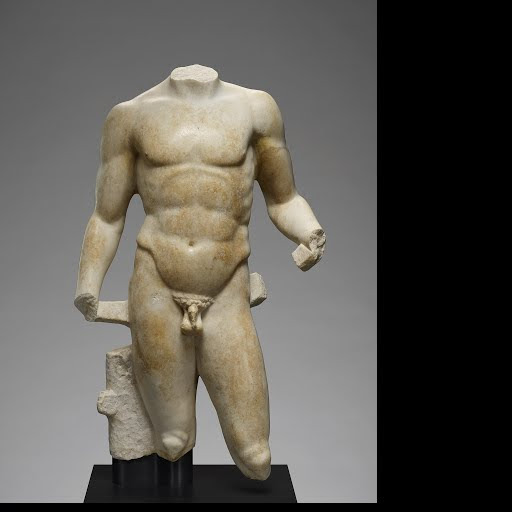
(Male torso, about A.D. 100, Unknown)
"[Neither the overweight nor the underweight body] is in due proportion. But the body which equals the Canon of Polykleitos reaches the summit of complete symmetry." — Galen, Ars Medica K 343
For the ancient Greeks, precisely measured weight was less important than the perception of symmetry and balance.
They had a term for this desirable state of wellness: εὔσαρκος (eusarkos), meaning "well-fleshed" or "fleshy."
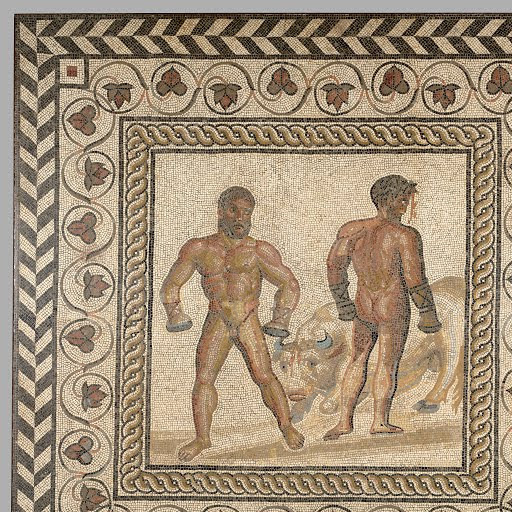
(Mosaic floor with combat between Dares and Entellus, A.D. 175-200, Unknown)
Because the Greeks prized moderation in all things, bodies or behaviors that stood out from this ideal were targets of criticism. Perhaps surprisingly, this criticism also applied to muscular athletes, such as wrestlers and boxers, who required constant high-calorie diets.

(Statuette of a boxer, unknown)
Big Bodies in Comedy
Mockery of those who ate more or less than necessary was one way to impose social compliance and maintain political order.

(Apulian red-figure bell krater, 370-360 BCE, Cotugno painter)
Many Greek and South Italian vases often depict comic actors wearing "fat suits" (as well as a mask and a phallus) to embody popular character types. Actors used such props as comic gags, and vase painters often represented them with great care.

On this Apulian mixing bowl, lines extending across the actor's chest make clear that his large, sagging breasts are artificial. His belly is unnaturally circular and hangs too low — further evidence that he is wearing a costume.
It seems that the painter wanted to pointedly emphasize the exaggerated nature of such costumes.
Ample Satyrs
Not all depictions of larger bodies were mocking. Animal ears and the double flute identify this figure as a satyr, or a woodland deity. He reclines in a pose that would remind viewers of the satyrs' master, the wine god Dionsyos, who is often depicted reclining at a banquet.
Instead of on a fancy couch, the chubby old satyr rests on a full wineskin!

(Fragment of an Apulian squat Lekythos, 350-325 BC, Darius painter)
Under tufts of gray hair, lines accentuate the curving folds of the old satyr's body. Unlike the ridiculously artificial bodies of the padded actors, the satyr's big, hairy body is gentle and soft.
Like the plump pillow on which he rests, the satyr appears comfortable and at ease. This scene is meant to be lighthearted, and does not appear cruel or mocking.
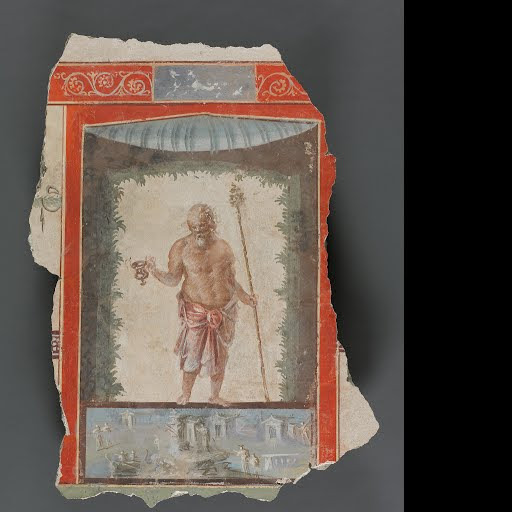
(Fresco fragment depicting an old Silenos with kantharos and thyrsos, AD 1-79, Unknown)
Similar attention to detail can be seen in this Roman wall painting of the old satyr Silenus. The painter’s skillful use of red shadows and pink highlights builds up the volume of his chest and stomach, which appear both soft and sturdy at the same time.
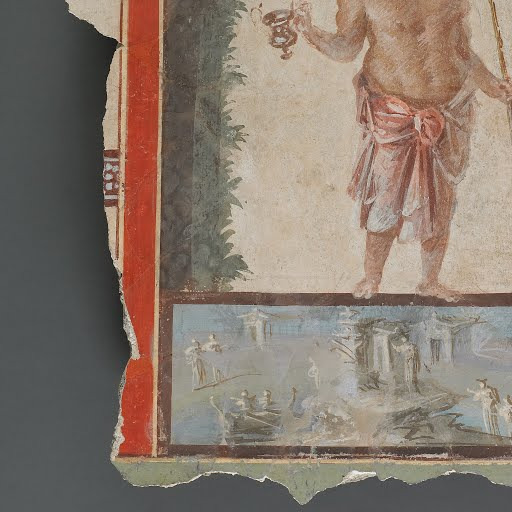
These fleshly older satyrs were symbols of pleasure-seeking and leisure.
Fragile Bodies on the Margins
Skinny or underweight bodies were also criticized, in part because of the association between emaciation and illness. Thinness could also negatively reflect on one's character.

(Miniature skeleton, unknown)
Ancient authors often noted a person's skinny frame as a way of pointing out their intellectual or social irrelevance.
The association of thinness and powerlessness is sometimes exploited in representations of enslaved individuals, domestic servants, and those otherwise marginalized in society.

(Finial with a resting youth, unknown)
On this figurine of a resting youth, the individually shaped ribs might suggest that the figure is undernourished.

In depictions of older individuals, such as this statuette of an old woman, underweight features are often used to indicate frailty.

(Statuette of an old woman, 100-001 BCE)
Such subjects were popular in the Hellenistic period (c. 330-31 BC) —a time of unprecedented social inequality — and consciously aestheticized:
"When we see emaciated people we are distressed, but we look upon statues and paintings of them with pleasure, because imitation, as such, is attractive to the mind's nature." - Plutarch, Quaestiones convivales 5.1.
Size and Gender
Body fat was also linked to gender, especially in the Roman Empire. While bodies of women were routinely criticized by Roman authors, fluctuation in weight did not render them less feminine. By contrast, both fat and skinny men were explicitly mocked as effeminate, lacking either physical strength or stamina.
Biographies of unpopular Roman emperors often weaponize their body size in this way. Of the emperor Galba, the biographer Suetonius writes, "it is said that he was a heavy eater," immediately before turning to rumors about his inclinations towards "unnatural desires."
Such fat-shaming seems not to have mattered to the emperors themselves. Their official portraits show little concern for concealing the fullness of their faces.
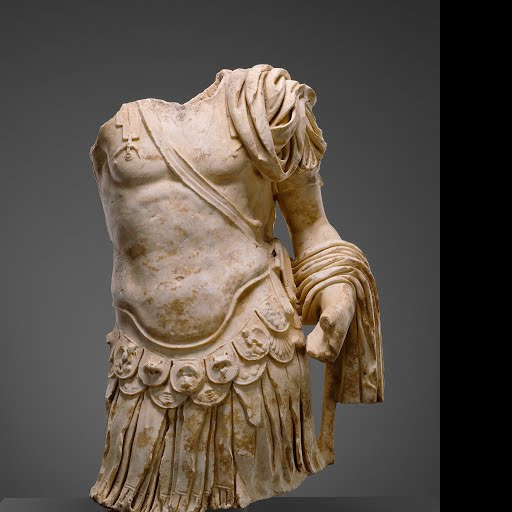
(Torso of a cuirassed statue, unknown)
The situation may have been different in military affairs. The anxieties Roman men felt about their bodies can be seen in their choice of armor. Their bronze breastplates were decorated with chiseled pectorals and washboard abs, creating the illusion of a skin-tight fit.
It is unlikely that such breastplates were meant to deceive, any more than the fat suits of comic actors. What they offered to their wearers was the illusion of inhabiting — for a moment — the ideal body of a Polykleitan statue.
Divine Softness
A closer look at ancient art reveals that the bodies of gods were sometimes less harshly judged than those of mortals. Depictions of certain gods regularly focus on the softer parts of their bodies.
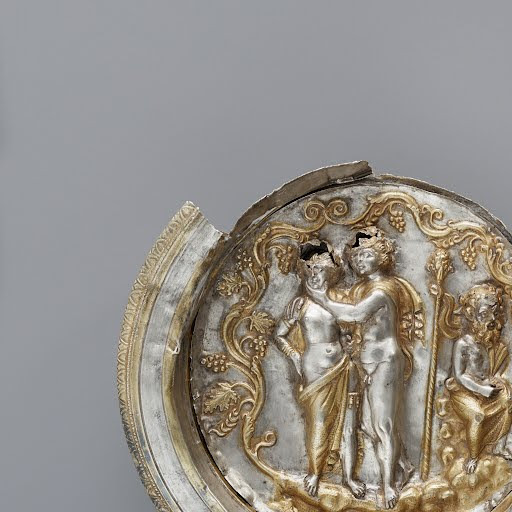
(Bowl with a medallion depicting Dionysos and Ariadne, unknown artist, -100)
The maker of this Hellenistic silver medallion went out of their way to show the curvy bodies of the wine god Dionysus and his wife Ariadne, engraving lines under their bellies to highlight the sensuality of their encounter.
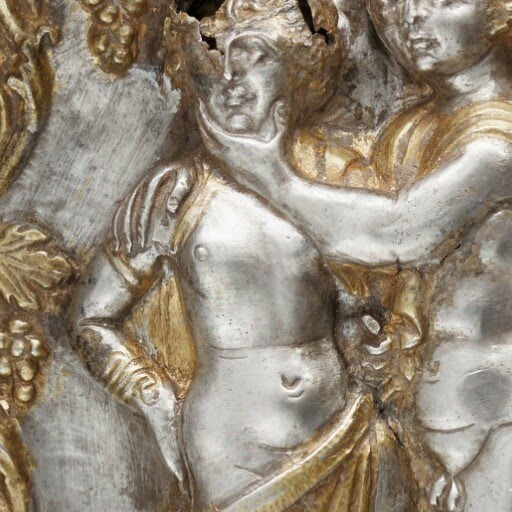
Some popular representations of the love goddess Venus, such as the so-called "Crouching Venus" type, unquestionably emphasize the fleshiness of her body.

Statue of a Crouching Venus Statue of a Crouching Venus, Unknown, A.D. 100–150, Provenant de la collection : The J. Paul Getty Museum
Modern observers have highlighted the positive associations between fleshiness and fertility expressed by a variety of Greek and Roman authors, but there is more to the story.
The rolls of flesh on the goddess's belly also gave the ancient sculptor a means of creating a very intimate encounter between viewer and goddess.
To ancient viewers of all ages and genders, accustomed to seeing gods represented solemn and upright, the crouching pose allowed a glimpse into the goddess's private world.
The crouching goddess seemed more approachable to worshippers, in part because her body moved in ways they could recognize from their own lived experience. The softness of Venus’s body made the cold, hard marble come to life.
#ancient greece#ancient rome#body positivity#fatphobia#greek gods#body fat#venus#dionysus#dionysos#ariadne#roman emperors#satyrs#underweight#satyr#silenus#ancient art#ancient greek art#body types#art#weight#ancient greek society#roman empire
32 notes
·
View notes
Text
ARS 225 3 contemporary digital artist.
3 contemporary digital artist I like
Tite Kubo
-I like the character structure is unique and a bit realistic structure not sure how to explain it, but it has its charm.
-The character design like the clothes in some of his art is modernized
-The shading and coloring to make things pop out

Jubilee/8pxl
-Amazing use of colors
-Creating art with a unique style which is with pixel
-Beautiful scenery

Fosgarra
-Some abstract in the art
-Unique use of colors
-Some of his arts convey message

2 notes
·
View notes
Text
i'm gonna be completely honest with yall the ls dunes discourse is so fucking stupid. it's really obvious you are all like sixteen (which i am literally sixteen too so. not inherently a bad thing. but still.) i've waited until shits's died down a little to post this cuz ik ill get hate but i gotta get it off my chest.
i am BEGGING you all to go to a modern art museum or go research performance art pieces or just fucking google fountain by dechamp and PLEASE stop acting like "art" consists entirely of anime-style fanart you see on tiktok. yes this is about the fact that the entire comment section of the posts about the old wounds music video is teenage my chem fans going "ai art isn't real art!!!!! you hate artists!!!!!!!!"
you can not meaningfully define art. art is art if someone says it is. yes that includes ai art you literally sound like the tradwives who whine on twitter about modern/abstract art not being real art. there is no definition of art you can make that excludes AI generated content and includes pieces of undeniable modern art.
now i AGREE that there are some ethical issues with ai art. mainly that the content gathering methods for most generators are iffy. HOWEVER this relies on the assumption that intellectual property is a thing that exists and is important to protect. in an ideal world it shouldn't exist and copyright laws will almost always do more harm than good. however under capitalism there is unfortunately some practical value in protecting the rights to artists' works.
"but xander it's stealing jobs from real artists!!!!!!"
okay. here's the thing. it is true that ai has the potential to reduce the ability of artists to make a living off their art. just like photography took jobs from painters and automation took jobs from factory workers and tractors took jobs from farmers. the issue there is capitalism, NOT individual people not wanting to buy commissions from you.
⚠️side tangent warning⚠️
there's this hugely widespread attitude in young visual artist communities on the internet that you're entitled to attention and commissions and i'm sorry to be mean but you're just. not. i'm sorry but you literally are not that's not how the world works. you ARE allowed to be frustrated that your art doesn't get attention or that no one buys commissions from you. that is a totally valid feeling that i get as well!!!!! i know deeply the pain of posting a piece you're super proud of and spent hours and hours on and getting like three notes! that's a completely valid frustration! but truthfully you do not have the right to guilt trip people for not wanting to reblog your art for whatever reason.
"but how can they expect me to keep making content for free for them if they don't reblog it??!!" then stop making content for them. if they didn't reblog your art then i'm sorry to be mean but they probably will not be bothered if they don't see any art from you again. if people see art that they want on their blog or they think is worth sharing for whatever reason, they will reblog it. there will always be hundred of creators getting loads of praise for there art who will keep making it. and if they scroll past it then it just didn't speak to them like that. begging and pleading and guilt-tripping people to give you attention will not change that. and there will always be many more artists who do not find success on the internet, for whatever reason. it doesn't mean your art is bad though!! art should have intrinsic value to you and if it doesn't then maybe it's not the path for you. if you don't have the internal motivation to keep making art without the attention you're not getting, then stop spending so much time making art. i went through it, i get it. i know the frustration of not feeling appreciated. you know what i did? i stopped posting most of my art. and i stopped caring about notes when i did. i make art because i love it and i can be proud of my art without external validation.
and i promise you that every artist in history knows the pain of not being able to make money off your work. unfortunately under capitalism that's just how art is. it is usually not profitable. the reason you're not getting commissions isn't because the world is full of lazy entitled people who hate artists and would rather use ai than support you, it's because commissions are not something it is reasonable to expect to make much money off of. i hate to speak in capitalist terms but it's not a desired product. most people don't walk around having images in their brain that they want to exist that theyre can't make themself that they're willing to pay people fifty bucks to draw. most people are happy imagining their ocs in their mind or using pictures for their profile pictures.
and most adult, professional, non-terminally-online artists will tell you that unfortunately art has never been profitable for the majority of people. that they don't have much of a problem with AI because they either don't make money off their art already or know that people will keep wanting to buy their paintings or whatever if they want to buy their paintings. that humans will always appreciate human-made art and ai is more of a novelty than something that's going to ruin the lives of all artists and take away opportunities that they never really had. that the ai-animated shows netflix is experimenting with are simply shows that wouldn't exist if netflix didn't have a cheap way to make them, not lost potential jobs for "real artists."
and i do think there's a genuine issue with the way you guys are guilt-tripping every person who scrolls past your art that's going to seriously fuck up anyone with ocd who maybe just doesn't like your art very much!!!!!!! and i think there's something gross about the way you guys are talking about artists as if we're some oppressed minority that's under a wave of hatred and bigoted attacks. as if every single human being isn't an artist in some way. as if there's some targeted hate campaign directed at the tiktok cartoonists who are the only people you think of when you hear the word "artist." and don't get me wrong i think art is more important than anything. i think it's what makes us human. it's everything to me it's my entire life. but i also think you guys have developed a really juvenile attitude about it.
⚠️end of side tangent⚠️
do i think it would have been better if dunes paid a traditional animator to make the old wounds music video? yeah of course. and their bullshit justification about art being meant to make people mad so they're doing something right or whatever is fucking stupid and makes me cringe. but i don't think they've committed the grave unforgivable sin you guys are acting like it is.
4 notes
·
View notes
Text
The Art of Shape: Redefining Sculpture in the 21st Century
Introduction
Sculpture has long been a medium of artistic expression, evolving alongside human civilization. From the grandeur of Renaissance masterpieces to the bold abstractions of modernism, each era has left its mark on sculptural art. But what does sculpture look like in the 21st century?
Today’s artists are redefining shape, form, and material—pushing boundaries with new techniques, digital tools, and unconventional mediums. This article explores how contemporary sculptors are reshaping the art world and challenging traditional norms.
The Evolution of Sculpture: A Brief Overview
1. Classical Sculpture: The Birth of Form
Ancient sculptures were deeply rooted in realism and idealized human figures. Greek and Roman sculptures focused on: ✔ Proportions and balance (e.g., Michelangelo’s David) ✔ Religious and mythological themes ✔ Marble, bronze, and stone as primary materials
2. Modernist Sculpture: Breaking Away from Tradition
In the 20th century, artists rejected realism and embraced abstraction. Notable movements included:
Cubism – Fragmented, geometric shapes (Pablo Picasso, Umberto Boccioni)
Surrealism – Dreamlike, unconventional forms (Salvador Dalí, Henry Moore)
Minimalism – Stripping art to its essentials (Donald Judd, Tony Smith)
3. 21st Century Sculpture: The Era of Innovation
Today, sculpture is more than just static statues—it’s an interactive, digital, and conceptual experience. Artists are embracing:
New materials like plastic, resin, and recycled waste
Digital tools such as 3D printing and AI-generated design
Performance-based sculpture that integrates movement and sound
Key Trends Redefining Sculpture in the 21st Century
1. Digital Sculpting & 3D Printing
Technology has revolutionized the way sculptors work. Digital sculpting software like ZBrush and Blender allows artists to: ✔ Experiment with shapes before physically creating them ✔ Design intricate, impossible-to-carve forms ✔ Use 3D printing to bring digital models to life
Famous artist Joshua Harker creates intricate, lace-like sculptures using 3D printing, proving that the virtual and physical worlds are merging in art.
2. Sustainable & Eco-Friendly Sculpture
Environmental consciousness has led to an eco-art movement where sculptors repurpose waste materials into stunning works. Artists like Sayaka Ganz use discarded plastic objects to create fluid, dynamic sculptures.
3. Interactive & Kinetic Sculpture
Sculpture is no longer just something to observe—it’s something to experience. Kinetic and interactive sculptures move, respond, and engage audiences.
Theo Jansen’s “Strandbeests” – Wind-powered walking sculptures
Anthony Howe’s wind-driven kinetic sculptures – Hypnotic metalwork in motion
4. Augmented Reality & Virtual Sculpture
Some sculptors are ditching physical materials altogether. With AR (Augmented Reality) and VR (Virtual Reality), artists can create digital sculptures that exist only in virtual spaces.
Refik Anadol’s digital installations merge AI with fluid motion sculptures
Krista Kim’s "Mars House"—the first NFT digital sculpture home
5. Fusion of Sculpture & Performance Art
Some artists blur the line between sculpture and performance, using the body as a sculptural element.
Marina Abramović – Live performances as living sculptures
Nick Cave’s “Soundsuits” – Wearable sculptures combining dance, sound, and movement
The Future of Sculpture: Where Are We Headed?
Sculpture in the 21st century is limitless. With advancements in AI, biotechnology, and digital fabrication, future sculptors may work with programmable materials, living organisms, or even self-assembling structures.
We’re witnessing an era where sculpture is: ✔ More accessible – 3D printing allows anyone to create art ✔ More interactive – Viewers are part of the artistic experience ✔ More diverse – Artists worldwide are incorporating cultural, social, and technological narratives into their work
Conclusion
The art of shape is no longer confined to stone, bronze, or marble. In the 21st century, sculpture is being redefined by technology, sustainability, interactivity, and digital possibilities. Whether through 3D printing, kinetic movement, or augmented reality, today’s artists are shaping the future of sculpture in groundbreaking ways.
So, what does the future hold for sculpture? One thing is certain—it will continue to evolve, surprise, and inspire.
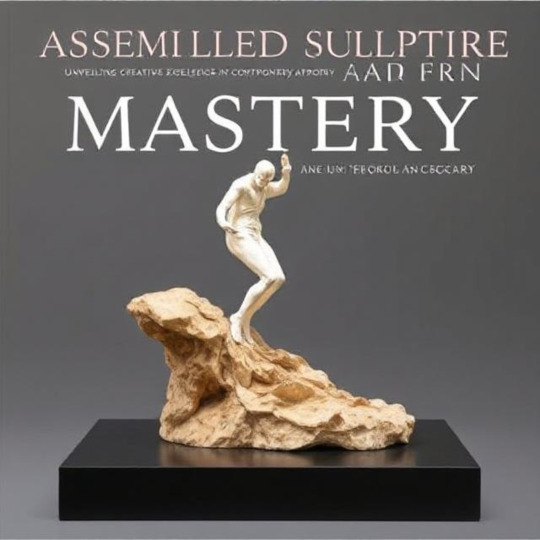

0 notes
Text

Vs Gaitonde Artwork At GalleriaVsb
V.S. Gaitonde’s Artwork, showcased at GalleriaVSB, exemplify the pinnacle of Indian abstract art. Renowned for his meditative, non-representational style, Gaitonde’s artwork are characterized by their serene compositions, delicate textures, and masterful use of light and color. Drawing inspiration from Zen philosophy, his art invites introspection and spiritual exploration. A pioneer in modernism, Gaitonde’s timeless creations continue to inspire, representing elegance, depth, and innovation in Indian contemporary art.
1 note
·
View note
Text
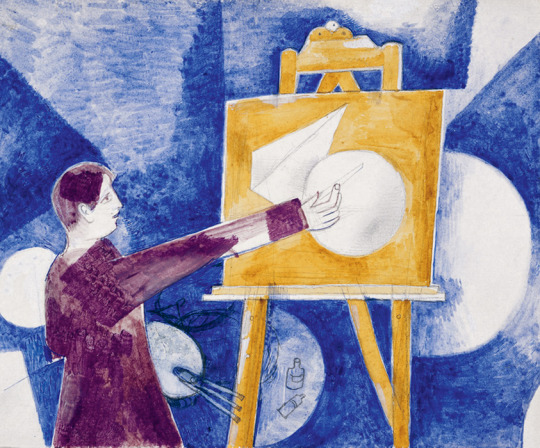
Marc Chagall, Self-Portrait with Easel, 1919. Gouache on paper. Private collection. Artwork © Artists Rights Society (ARS), New York / ADAGP, Paris
The Russian Revolution of 1917 had an enormous effect on Marc Chagall. The passage of a law abolishing all discrimination on the basis of religion or nationality gave him, as a Jewish artist, full Russian citizenship for the first time. This inspired a series of monumental masterpieces, such as Double Portrait with Wine Glass (1917), celebrating the happiness of the newly married Chagall and his wife Bella. As the months went by, Chagall felt the need to help young residents of his native city of Vitebsk (in present day Belarus) lacking an artistic education, and to support other Jews from humble backgrounds.
The year 2018 marks the 100th anniversary of Chagall’s appointment as Fine Arts Commissioner for the Vitebsk region, a position that enabled him to carry out his idea of creating a revolutionary art school in his city, open to everyone, free of charge, and with no age restrictions. The People’s Art School, founded by Chagall in 1918, was the perfect embodiment of Bolshevik values. El Lissitzky and Kazimir Malevich, leading exponents of the Russian avant-garde, were two of the artists invited to teach at the school. Lissitzky took charge of the printing, graphic design, and architecture workshops, while Malevich, leader of the abstract movement and founder of Suprematism, was a charismatic theorist who galvanized the young students. A period of feverish artistic activity followed, turning the school into a revolutionary laboratory. Each of these three major figures sought, in his own distinctive fashion, to develop a “Leftist Art” in tune with the revolutionary emphasis on collectivism, education, and innovation.
Chagall, Lissitzky, Malevich: The Russian Avant-Garde in Vitebsk, 1918-1922 traces the fascinating post-revolutionary years when the history of art was shaped in Vitebsk, far from Russia’s main cities. Through some 120 works and documents loaned by museums in Vitebsk and Minsk and major American and European collections, the exhibition presents the artistic output of Marc Chagall, El Lissitzky, and Kazimir Malevich, as well as works by students and teachers of the Vitebsk school, such as Lazar Khidekel, Nikolai Suetin, Il’ia Chashnik, David Yakerson, Vera Ermolaeva, and Yehuda (Yury) Pen, among others.
Chagall, Lissitzky, Malevich: The Russian Avant-Garde in Vitebsk, 1918-1922 is organized by the Centre Pompidou, Paris, in collaboration with the Jewish Museum, New York.
Chagall, Lissitzky, Malevich: The Russian Avant-Garde in Vitebsk, 1918-1922 is organized by the exhibition curator, Angela Lampe, Curator of Modern Art, Musée National d’Art Moderne, Centre Pompidou, Paris, in collaboration with Claudia J. Nahson, Morris & Eva Feld Curator, The Jewish Museum, for the New York presentation. The exhibition is being designed by Leslie Gill Architect. The exhibition graphics are being designed by Topos Graphics.
Chagall, Lissitzky, Malevich: The Russian Avant-Garde in Vitebsk, 1918–1922 is supported through the Samuel Brandt Fund, the David Berg Foundation, the Robert Lehman Foundation, the Centennial Fund, and the Peter Jay Sharp Exhibition Fund. The publication is made possible, in part, by The Malevich Society.
The Mobile Tour is made possible by:
1 note
·
View note
Text
How 3D Visualization of Architecture Transforming Contemporary Design

3D Visualization Revolutionizing Modern Design
In the realm of design and construction, architectural rendering companies has revolutionized the industry. This cutting-edge technology turns abstract concepts into concrete, immersive experiences by enabling architects, designers, and clients to see projects with remarkable clarity and precision. 3d architectural visualization services speeds up project deadlines, improves communication, and lowers errors by utilizing state-of-the-art software and technologies. The many facets of architectural 3D visualization will be examined in this essay, with particular attention paid to modeling, rendering firms, and their services.
1. what are rendering services for architecture?
In order to turn architectural concepts into photorealistic pictures and films, architectural rendering services are essential. These services entail producing intricate 3D images of metropolitan settings, landscapes, and interior and exterior designs. These services help clients close the gap between their ideas and reality by giving them realistic representations of their projects.
Before building starts, architectural rendering services let clients to see the finished product, spot design errors, and make well-informed decisions.
2. Architectural Rendering Companies' Function
3D visualization services for architects, designers, real estate developers, and construction companies are the specialty of architectural rendering companies. These businesses use cutting-edge technologies and highly qualified staff to create breathtaking visualizations that are customized to meet the unique requirements of each project.
Prominent businesses in this field frequently provide end-to-end solutions, which provide smooth communication and cooperation between all stakeholders, from the first concept visualization to the project's final presentations.
3. Comprehending 3D modeling of architecture
3D visualization starts with architectural 3D modeling. It entails utilizing specialist software to create a digital depiction of a building or area. Through this approach, designers can create scalable, realistic models for analysis, animation, and rendering.
In order to ensure that the finished result reflects the client's vision, designers can experiment with different design components, including materials, layouts, and lighting, by using architectural 3D modeling
4. Advantages of Services for 3D Architectural Visualization
Because 3D architectural visualization services have so many benefits, demand for them has increased. These services improve project results and client happiness in addition to streamlining the design process.
3d architectural visualization services are essential to modern design because they are an effective means of bridging the gap between imaginative ideas and practical application.
5. Uses for Visualization in Architecture
Applications for architectural 3D visualization are numerous and span many industries, including:
Projects for homes
Imagining personalized residences, flats, and condominiums
Commercial areas:
creating designs for hotels, shops, and office buildings.
Planning for cities
constructing big projects, such as neighborhoods and parks.
Facilities for industry
arranging warehouses, factories, and other useful areas.
6. The Prospects for 3D Visualization in Architecture
The future of architectural 3D visualization is bright as long as technology keeps improving. The way architects and designers approach their job is changing as a result of innovations like real-time rendering, AI-powered tools, and VR/AR integration.
The future of design and construction is being shaped by architectural 3D visualization, which is more than just a tool.
Conclusion
The design, communication, and execution of projects are being completely transformed by 3d architectural visualization services. This technology provides unmatched advantages to all parties involved, from architectural rendering services to 3D modeling and rendering firms' experience. Architects and designers may realize their ideas with unparalleled clarity and accuracy by utilizing these cutting-edge tools, opening the door to a more inventive and productive future.
0 notes
Text
Why composite skill labs are crucial for preparing CBSE students for the future ?
https://makersmuse.in/wp-content/uploads/2025/01/473086760_1031608455670138_8083024184851171797_n.jpg
In a bustling classroom, Riya excitedly demonstrates her science project to her classmates an automated irrigation system powered by coding and electronics. Riya’s school recently introduced a composite skill lab, and within weeks, her learning transformed from textbook theories to hands-on exploration. Stories like Riya’s illustrate why composite skill labs are not just a modern educational trend but a necessity for preparing CBSE students for the future. Call Us Today!
What Are Composite Skill Labs?
Composite skill labs are innovative educational spaces designed to integrate practical learning across multiple disciplines, such as science, technology, engineering, arts, and mathematics (STEAM). These labs foster creativity, collaboration, critical thinking, and problem-solving skills by providing students with real-world tools and scenarios to explore concepts.
For CBSE students, these labs bridge the gap between theoretical knowledge outlined in the curriculum and its practical application, preparing them for 21st-century careers.
Why Are Composite Skill Labs Essential for CBSE Students?
1. Fostering Real-World Problem-Solving Skills
Composite skill labs simulate real-world challenges, encouraging students to design and develop solutions. Whether it’s building a prototype or solving a coding challenge, students learn to think critically and apply theoretical concepts in practical contexts.
For instance, students studying environmental science in CBSE can work on renewable energy models in the lab, turning abstract concepts into hands-on projects.
2. Preparing for Future Careers
The World Economic Forum predicts that nearly 65% of today’s students will work in jobs that don’t yet exist. Careers in artificial intelligence, robotics, data analysis, and renewable energy demand interdisciplinary knowledge and skills. Composite skill labs equip students with foundational abilities in these areas, making them future-ready.
3. Boosting Creativity and Innovation
Traditional classroom methods often prioritize rote learning, but composite skill labs provide an open environment where students can experiment, fail, and innovate. This freedom sparks creativity and builds an entrepreneurial mindset, which is crucial in today’s fast-evolving job market.
4. Hands-On Learning Aligned with CBSE Curriculum
CBSE has been proactive in updating its curriculum to promote experiential learning, with a focus on subjects like artificial intelligence, robotics, and data science. Composite skill labs complement these updates by providing the infrastructure and tools necessary for effective learning.
5. Encouraging Collaboration and Teamwork
In composite skill labs, students often work in groups, mirroring workplace environments. They learn to communicate, collaborate, and respect diverse perspectives—soft skills that are as important as technical knowledge.
Success Stories from Schools with Composite Skill Labs
Many CBSE schools across India have already integrated composite skill labs into their campuses. Schools report a noticeable improvement in student engagement and performance in subjects like science and mathematics. Students have successfully created projects like mobile apps, water filtration systems, and IoT-based home automation, showcasing their potential to tackle real-world issues.
The Road Ahead
For composite skill labs to reach their full potential, schools need support in terms of funding, teacher training, and infrastructure. Collaborations with ed-tech companies, government initiatives, and private investments can make these labs accessible to every CBSE student, irrespective of location or resources.
Unlock the future
If you’re a parent, educator, or policymaker, consider advocating for composite skill labs in schools. These labs are not just an investment in infrastructure they are an investment in the future of our children. Let’s empower CBSE students to become the innovators, problem-solvers, and leaders of tomorrow.
Explore now how hands-on education can redefine student potential. Learn more about the transformative power of composite skill labs today!
0 notes
Text
Stylish Wall Art to Highlight Your Personal Style: A Guide to Home Interior Decor
When it comes to home interior decor, one of the easiest ways to transform a room is by adding stylish wall art. Whether you're looking to enhance your living room, bedroom, or even your hallway, the right wall art can truly highlight your personal style. Wall art is more than just decoration—it's an expression of who you are and what you love. From beautiful room decor to unique handmade pieces, choosing the right wall art can set the tone for the entire space.
In this blog, we’ll explore how to choose the perfect wall art for your home, why it’s important for your home decor, and how it can help you create an inviting, personalized space. Let's dive into the world of stylish wall art!
Why Wall Art Is Essential for Home Interior Decor
Your home is a reflection of you, and home interior decor plays a significant role in that. One of the most noticeable elements in any room is the walls. Blank walls can make a room feel unfinished or sterile, but the right artwork can breathe life into the space. Whether you’re a fan of modern art, vintage pieces, or minimalist designs, wall art allows you to infuse your personal touch into your surroundings.
Not only does wall art create a focal point in a room, but it also adds color, texture, and depth. When you choose pieces that resonate with your personality, you’re giving your home a unique character. It’s the perfect way to personalize your home decor without overwhelming the space.
Choosing the Right Wall Art for Your Space
When it comes to selecting stylish wall art, the key is to find pieces that complement your home interior decor style and reflect your personal preferences. Here are a few tips to help guide you:
1. Match Your Art to the Room’s Purpose
The first thing to consider is the room where the art will be placed. For example, in a beautiful room decor like the living room or dining room, you may want to choose bold, statement pieces that draw attention. In quieter spaces like the bedroom or office, calming, serene artwork may be a better fit.
For a more casual or relaxed vibe, you might choose soft, neutral tones, whereas if you want to add energy and vibrancy, opt for colorful, abstract pieces. Knowing the purpose of the room will guide you toward art that enhances the atmosphere.
2. Consider the Size and Scale
The size of the wall art should be in proportion to the size of the wall and the room itself. Large art pieces can make a bold statement, while smaller pieces are better for intimate spaces or smaller walls. If you're hanging multiple pieces, make sure the overall arrangement feels balanced and cohesive.
An oversized artwork in a small room can overwhelm the space, while tiny artwork on a large wall may look lost. It's important to maintain a visual balance between the artwork and the rest of the room.
3. Use Color to Enhance Your Home Decor
Colors play a crucial role in home decor. When selecting wall art, think about the color palette in the room. You don't necessarily have to match the exact shades, but the artwork should complement the existing tones. For example, if you have a neutral-toned room with pops of color, choose art that reflects those accents.
Alternatively, you could choose art that contrasts with the room's existing color palette for a striking effect. Art with vibrant colors can inject energy into a dull room, while muted tones can help create a more relaxing atmosphere.
4. Consider Texture and Materials
Wall art comes in a variety of materials, from traditional canvas prints to handmade beautiful hanging pieces made from natural materials like wood, metal, or fabric. The texture of the artwork adds another layer of visual interest to your home interior decor.
For example, a textured canvas print can create depth, while a wooden piece may evoke a rustic feel. If you're looking for a more luxurious touch, consider framed art with metallic accents or a piece of glass art that catches the light.
Incorporating Stylish Wall Art Into Your Home Interior Decor
Now that you have a sense of what to consider when choosing wall art, let's talk about how to incorporate it into your home decor. The key is to make sure the art enhances the room without competing with the furniture or other elements.
1. Create a Gallery Wall
A gallery wall is a great way to showcase multiple pieces of art in a cohesive arrangement. You can mix and match different styles, sizes, and colors, as long as the overall aesthetic feels balanced. A gallery wall allows you to feature several beautiful room decor pieces without overwhelming the space.
To create a successful gallery wall, start by selecting a central theme or color scheme. Then, arrange the pieces in a grid pattern or an organic layout that flows naturally. Don’t be afraid to experiment with different frame styles and sizes to add visual interest.
2. Use Art as the Focal Point
One of the best ways to highlight your personal style is by making your wall art the focal point of the room. A single large piece of art or a unique handmade beautiful hanging can serve as the centerpiece of the space. Surround it with minimalist furniture to allow the artwork to take center stage.
If you’re placing artwork above furniture, such as a sofa or console table, make sure it’s hung at the right height—typically around 57 to 60 inches from the floor. This ensures that the artwork is at eye level and is easy to appreciate.
3. Mix and Match Styles
If you’re someone who loves variety, mixing different art styles can add a dynamic element to your home interior decor. For example, you can combine vintage prints with modern abstract pieces or pair traditional oil paintings with minimalist digital prints.
Just be mindful of how the styles interact. For instance, you can create contrast by placing a bold, colorful piece of art next to something more subdued. This contrast creates visual interest without overwhelming the space.
4. Think About Placement and Symmetry
The placement of your artwork can greatly impact the room’s overall vibe. Symmetrical arrangements often create a sense of order and calm, while asymmetrical placements can add energy and movement. Consider the layout of the room and the furniture arrangement when deciding where to place the art.
For example, above a sofa or bed is a common place for a statement piece, while hallways, kitchens, and bathrooms are perfect for smaller, more subtle pieces. Don’t forget about the size and scale of the artwork, too. Smaller spaces benefit from smaller pieces, while larger rooms can accommodate oversized or dramatic works.
Where to Shop for Stylish Wall Art
If you're ready to add some new wall art to your space, there are countless places to shop, both online and in physical stores. Many websites offer a wide range of styles, from abstract art to beautiful room decor. One popular website for finding unique pieces is dbeautify.com. They offer a variety of options, including prints, paintings, and handmade pieces, making it easy to find something that fits your style and budget.
Local galleries and art fairs are also great places to find one-of-a-kind pieces that can add character to your space. Don’t forget about the option to commission custom artwork that reflects your personal tastes and vision.
The Power of Handmade Beautiful Hanging Pieces
When you want something truly special and unique, handmade beautiful hanging art is the way to go. These pieces often carry a personal touch, which can make your home decor even more meaningful. Whether it's a handwoven tapestry, a hand-painted canvas, or a sculptural piece made by a local artisan, handmade art has a timeless quality that mass-produced pieces can't replicate.
Handmade pieces are also perfect for showcasing your individuality. You can find pieces that align with your values—whether that’s supporting local artisans, choosing sustainable materials, or simply owning something that no one else has.
Conclusion
Adding stylish wall art is one of the most impactful ways to highlight your personal style and enhance your home interior decor. From creating a gallery wall to choosing unique, handmade beautiful hanging pieces, the right artwork can truly elevate your space. Keep in mind the size, color, and texture of the art you choose, and don’t be afraid to mix styles and experiment with different placements. Remember, your home is your sanctuary, and with the right wall art, it will reflect your unique tastes and personality.
Know More About Engineered wood Wall Art
#mdf#wall#hanging#sculpture#elegant#decor#decoration#beautiful#stylish#engineered wood#wallart#home#décor#art#home improvement#home makeover#makeover#home beautify#easy to apply#art and craft#craft#0.05 mm accuracy#lightweight#black matte finish#black#classic#classic look#vintage look#easy installation#pre installed double sided tape
0 notes
Text
Sims 3 Build - Cheerful Cottage
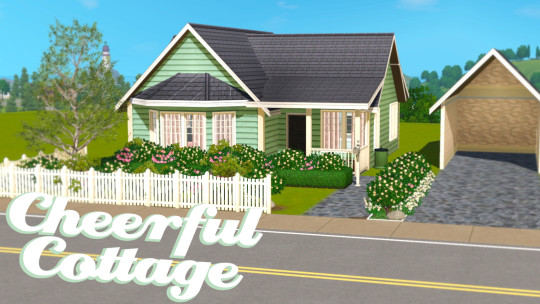
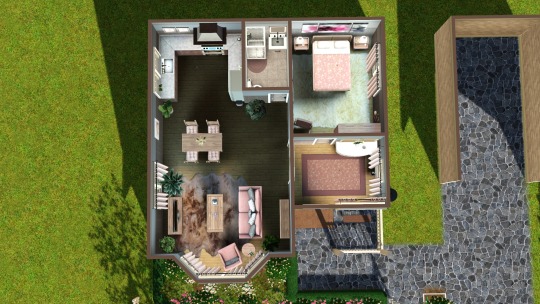
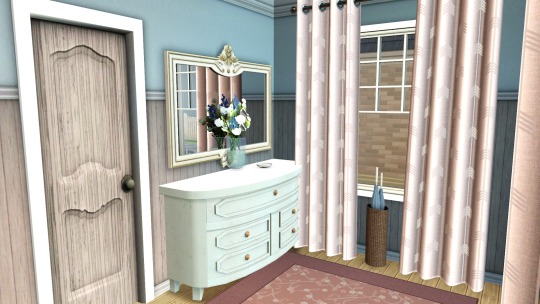
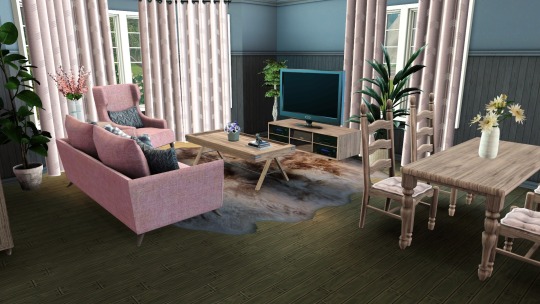
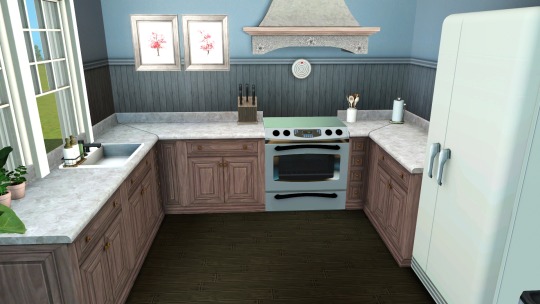
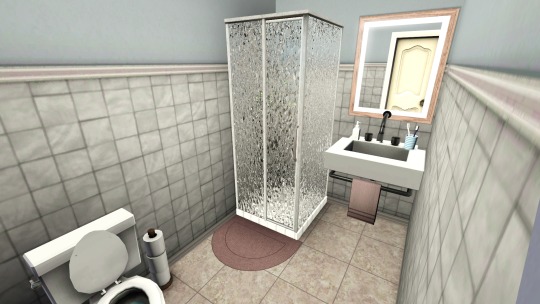
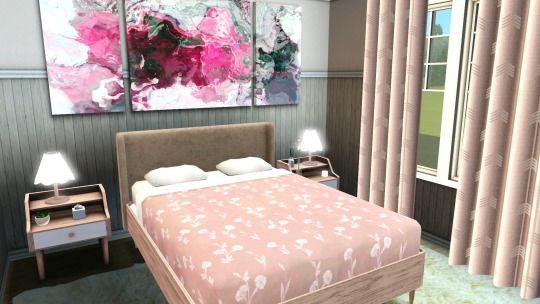
A cosy and vibrant cottage, perfect for a sim starting their new life. 1 bedroom and 1 bathroom on a 20x20 lot.
Watch the speed build: https://youtu.be/-Kc9YLWA6t0
Download here:
Patreon (free): https://www.patreon.com/posts/111265861/
Exchange: https://www.thesims3.com/assetDetail.html?assetId=9605511
Expansion packs:
Ambitions
University Life
Stuff packs:
None
Store content:
None
Custom content:
heaven - Pewter Slate Roof with White Trim
PralineSims - P-Glass Tiles III
ArtVitalex - Mayorka Ceiling Spot Lamp
Mutske - Kitchen Aria Cookerhood
Kerrigan House Designs - Autumnfell Bench
Lulu265 - Eclectic Living Room Coffee Table
PralineSims - Big Flokati III
PralineSims - Sheep Carpet IV
ArtVitalex - Glen Bedroom (Bed, Mirror)
johziii - Irene Bedroom (Nightstand, Lamp):
Martassimsbook - Lorelea Abstract Paintings:
Lulu265 - Bedford Bedroom Wall Art
Julietsimscc - Dolce Vita Paintings (Medium Frame)
Martassimsbook - Pinkboxdesign Kitchen Clutter Set (Utensils, Dishsoap)
ATS3 - Square Canisters
ATS3 - Kitchen Herbs (Basil, Mint)
ArtVitalex - Rowlett Hallway Extra (Key Bowl, Umbrella Holder)
Martassimsbook - cmdesigns Anemone Bathroom Set Candle
NynaeveDesign - Lyne Curtains (Curtains 1x1 Left, Curtains 1x1 Right, Curtains 2x1)
Martassimsbook - Cowbuild Dahlia and Delpinium Vases
Martassimsbook - Ars-botanica Cup of Pansies
ATS3 - Toothbrush #2
Mutske - Toiletroom Aria Toilet Paperholder
Onyxium - Kearny Bathroom Accessories (Soap Dispenser, Reed Diffuser)
Martassimsbook - Cowbuild My Home Set Potted Cordyline Palm
Martassimsbook - novvvas Mid Century Modern Living Room (Books 2, Succulent 3)
Martassimsbook - novvvas Planties pt3 (Ficus Elastica, Monstera Deliciosa)
bioniczombie - Lug Trio
Onyxium - Troia Living Room (Bergere, Sofa Double)
ArtVitalex - Juniper End Table
Martassimsbook - novvvas Rahat Set Ficus
Martassimsbook - Aira Daisy Set (Acrylic Vase A, Acrylic Vase Flowers)
ArtVitalex - Fullerton Toilet Brush
Catharsim - Syboulette Hortensia Beech Tree
Martassimsbook - Ravasheen Hang Around Closet Set P1 Shelves
Martassimsbook - Ravasheen Hang Around Closet Set P2 (Dress Belt, Summer Dress, Tunic, Long Sleeve Dress, Shorts, Sweater)
Martassimsbook - Ravasheen Hang Around Closet Set P3 (Floppy Hat, Ivy Cap, Fedora, Sunglasses)
62 notes
·
View notes
Text
The Art of Three Dimensions: A New Era of Visual Storytelling

Art has always been a medium for storytelling, evolving with humanity’s imagination and technology.
From the primitive cave paintings of Lascaux to the intricate masterpieces of the Renaissance, each era has its signature style. Today, we are witnessing a transformative chapter in artistic expression: the rise of 3D art.
Among its many applications, "3D painting for living room" decor is revolutionizing interior design, offering a blend of aesthetics, depth, and storytelling that captivates the modern homeowner.
The Evolution of Art into the Third Dimension
Traditional art forms rely on two-dimensional surfaces to create an illusion of depth and perspective.
However, 3D art breaks these boundaries by adding physical or visual depth, creating a tangible or virtual experience.
This leap has been made possible by advancements in technology, including 3D modeling software, augmented reality (AR), and high-resolution printing techniques.
In home decor, 3D painting has emerged as a favorite for those seeking a unique and immersive ambiance. These artworks go beyond the flat canvas, using light, shadow, and intricate designs to create stunning focal points in living spaces.
Why 3D Painting for Living Rooms is in Demand
The living room is often the heart of a home—a space where families gather, guests are entertained, and memories are made. It’s no surprise that homeowners invest significant effort into decorating this area. Here’s why 3D painting has become a popular choice:
Visual Depth and Realism Unlike traditional paintings, 3D artwork creates a sense of depth that draws viewers into its world.
Whether it’s a tranquil forest scene, an abstract explosion of colors, or a realistic depiction of cascading waterfalls, 3D painting add a dynamic element to the living room.
Personalized Storytelling Every home tells a story, and 3D paintings allow homeowners to express their narratives uniquely. Customizable designs mean that each piece can reflect personal tastes, cultural influences, or cherished memories.
Versatility in Design 3D paintings can range from hyper-realistic depictions to abstract creations, making them suitable for various interior design styles. Whether your living room follows a minimalist aesthetic or an eclectic vibe, there’s a 3D painting to match.
Illusion of Space For smaller living rooms, 3D paintings can create an illusion of expanded space. A skillfully designed 3D mural or wall art can make a room feel larger and more open, enhancing its overall ambiance.
Choosing the Perfect 3D Painting for Your Living Room
When selecting a 3D painting, consider the following factors to ensure it complements your living room:
Theme and Color Palette The painting’s theme should align with your room’s overall design.
For instance, nature-inspired 3D art can add tranquility, while vibrant abstract pieces can energize the space. Ensure the color palette harmonizes with your furniture and decor.
Size and Placement The size of the artwork matters. A large mural might serve as a statement piece, while smaller 3D paintings can be part of a gallery wall. Consider the wall space and lighting to enhance the artwork’s impact.
Material and Finish 3D paintings come in various materials, including canvas, wood, and metal. The finish—whether matte or glossy—also affects how the artwork interacts with light and space.
Customization Options Many artists and companies offer bespoke 3D painting services. Opting for a customized piece ensures it aligns perfectly with your vision and the room’s aesthetic.
Transforming Living Rooms with 3D Art
Let’s explore a few creative ideas for incorporating 3D painting into your living room:
Nature-Inspired Murals: Bring the outdoors inside with 3D murals depicting lush forests, serene beaches, or majestic mountains. These scenes not only add depth but also infuse the space with a calming vibe.
Geometric Patterns: For modern and minimalist interiors, opt for 3D paintings featuring geometric shapes and abstract patterns. These designs add a contemporary flair and work well with clean lines and neutral tones.
Optical Illusions: Add a playful touch to your living room with 3D art that creates optical illusions. Imagine a painting of a spiral staircase that seems to descend into the wall or a realistic window opening to a bustling cityscape.
Cultural Themes: Celebrate your heritage or favorite cultures with 3D art that incorporates traditional motifs, symbols, or scenes.
Caring for Your 3D Art
To maintain the beauty of your 3D painting, follow these simple care tips:
Regular Dusting: Use a soft, dry cloth to remove dust from the surface.
Avoid Direct Sunlight: Prolonged exposure to sunlight can cause colors to fade.
Keep Away from Moisture: Ensure the artwork is displayed in a dry area to prevent damage.
Professional Cleaning: For intricate or high-value pieces, consider professional cleaning services.
The Future of 3D Art in Home Decor
As technology continues to evolve, the possibilities for 3D art in home decor are limitless.
Augmented reality and virtual reality are already making waves, allowing homeowners to preview 3D artworks in their spaces before purchasing.
Additionally, advancements in sustainable materials and printing techniques are paving the way for eco-friendly 3D art solutions.
In this new era of visual storytelling, 3D painting for living rooms stands out as a blend of innovation and artistry.
It transforms walls into canvases of imagination, telling stories that resonate with the soul and elevate the space.
Whether you’re looking to make a bold statement or create a serene sanctuary, 3D art offers endless opportunities to bring your vision to life.
Conclusion
The art of three dimensions is more than a trend; it’s a testament to how far human creativity has come. By embracing 3D painting for living rooms, homeowners can turn ordinary spaces into extraordinary ones. So, step into this new era of visual storytelling and let your living room be a masterpiece in its own right.
0 notes
Text
Top Education Trends for Kids in 2025
The world of education is constantly evolving, and 2025 is no exception. As technology advances and teaching methodologies adapt, new trends are shaping the way children learn and develop essential skills. Here’s a look at some of the most popular education trends for kids in 2025.

1. Personalized Learning Through AI
Artificial Intelligence (AI) is revolutionizing education by offering personalized learning experiences. AI-powered platforms analyze a child’s learning style, strengths, and areas for improvement, creating customized lesson plans. This approach ensures that each child progresses at their own pace, maximizing learning outcomes.

2. Gamification of Education
Gamification continues to gain traction as a fun and effective way to engage children in learning. By incorporating game-like elements such as rewards, challenges, and leaderboards, students are motivated to actively participate and retain information. Popular subjects using gamification include math, science, and language arts.
3. Focus on Emotional Intelligence (EQ)
In 2025, schools are emphasizing the importance of emotional intelligence alongside traditional academics. Programs designed to teach empathy, self-regulation, and social skills are becoming integral parts of the curriculum, helping children develop well-rounded personalities.

4. STEM and STEAM Education
Science, Technology, Engineering, Arts, and Mathematics (STEAM) education remains a cornerstone of modern learning. With a focus on hands-on projects and interdisciplinary studies, STEAM encourages critical thinking, problem-solving, and creativity, preparing kids for future careers.
5. Integration of Virtual and Augmented Reality (VR/AR)
VR and AR technologies are making learning more immersive and engaging. From virtual field trips to interactive 3D models, these tools bring abstract concepts to life, enhancing comprehension and sparking curiosity in young learners.

6. Eco-Education and Sustainability Awareness
As the world faces environmental challenges, teaching kids about sustainability has become a priority. Schools are incorporating eco-education into their curriculum, focusing on topics like recycling, conservation, and climate change to raise environmentally conscious citizens.
7. Hybrid and Flexible Learning Models
The pandemic paved the way for hybrid learning, and its benefits continue to influence education in 2025. Combining in-person and online learning, this model provides flexibility, accessibility, and personalized support, making education more inclusive.

8. Global Collaboration Projects
With advances in technology, students now have opportunities to collaborate with peers across the globe. These projects teach cultural awareness, teamwork, and global problem-solving skills, broadening their perspectives and preparing them for a connected world.
9. Mindfulness and Mental Health Focus
Recognizing the importance of mental health, schools are integrating mindfulness practices into daily routines. Techniques such as meditation, deep breathing, and journaling help children manage stress, improve focus, and enhance overall well-being.
10. Coding and Digital Literacy
In an increasingly digital world, coding and digital literacy are essential skills. Coding clubs, interactive programming lessons, and courses on safe internet practices are equipping kids with the tools they need to navigate and thrive in the digital age.
Final Thoughts
Education in 2025 is all about innovation, inclusivity, and preparing kids for the future. By embracing these trends, parents and educators can ensure that children not only excel academically but also develop the life skills needed to succeed in a dynamic world.
#momatos.in
#EducationTrends2025#KidsLearning#FutureOfEducation#PersonalizedLearning#STEAMEducation#GamificationInEducation#DigitalLiteracy#MindfulnessForKids#VRInEducation#EcoEducation
0 notes